

For the eighth time, Icaro has won the hang gliding world championships.
Alex Ploner first, Christian Ciech second.
Leadership certified by results, not just talk.
The hang glider’s modern age began in 1996 with the introduction of topless gliders.
From then on, there have been 12 World Championships.
Icaro2000 have won 9 of them.
For Alex it is his third world title
From when the LAMINAR first appeared in 1994, it has undergone many changes.
Today, all modifications are tested by three world champions: Manfred Ruhmer, Christian Ciech
(current world champion), and Alex Ploner.
After having taken the first two positions at the 2015 World Championships, and the first two positions at the 2016 European Championships, we have concentrated on making the Laminar’s performance even more accessible, not just for competition pilots, but for those who fly for the sheer pleasure of flying.
A pilot’s performance is better when the performance of his glider is easier to control. This is what we have been working on.
The 2017 Laminar has a totally new design for the wingtip area, with shorter tip wands and larger wingtips, so that wingspan and aspect ratio remain the same, also guaranteeing performance.
The wingtip modifications have changed the sail tension in the entire wingtip area, and this has improved handling, with easier turn initiation, and a reduction in the high-siding required in thermals, facilitating flying and making the pilot experience even more pleasurable.
The new features introduced in 2017 are completed by the introduction of Technora for the double surface.
We adopted this arrangement in order to make the glider easier to fly in whatever situation.
The Technora ODL04 used for the lower surface is lighter than that used for the upper surface, or the Dacron that is traditionally used for the lower surface, and this provides a weight reduction of about 300 grams and better control of wing twist.
For better handling and higher performance, with no compromises!

The Laminar sail has 6 removable mini-battens on the trailing edge, with a total weight of less than 15 grams, which have eliminated the vibration that sometimes occurred in this part of the sail at speeds exceeding 100 km/h.
The leading edge is not interrupted at the nose by the presence of pockets for the Mylar stiffeners, and this ensures optimum, uniform leading edge tension distribution.
The new design of the upper sail surface totally eliminates even the slightest degree of fabric deformation at all VG settings during flight.
We spend particular attention to improve sail tension in the wingtip area, with a new tip wand and a different tension distribution to achieve a considerable better handling.
The design of the leading edge and the front part of the double surface has been modified to optimize profile shape and tension distribution.
Likewise the design of the inner leading edge canvas has also been modified, again to improve sail tension in the forward part of the wing.
The chord ratio between the central and wingtip sections has been modified, and this has made it possible to increase aspect ratio. This has produced notable benefits in terms of handling, performance, stability, and flying pleasure for the pilot.
The 14.1 and 14.8 models have one extra batten to further reduce profile deformation at high speeds. The wingspan/battens ratio is now equivalent to that of the smaller models.
The batten pockets on the under-surface are designed to to prevent the battens from sliding out when the hang glider is exposed to a strong tail wind while waiting at the launch site.
The keel pocket now has an additional segment, a cover that hides the VG pulleys. This cover improves the appearance of the rear part of the wing, and reduces the aerodynamic drag. It provides protection when the hang glider has been disassembled and closed.

There is a choice of 8 different standard colour schemes, but an infinite number of personalization possibilities are available
The standard model is supplied with our special sail made in a Dacron material named “Square”.
This sail provides the best guarantee of durability over time. It has excellent rip stop characteristics as a result
of the reinforcement fibre arranged in two orthogonal directions.
It is the ideal choice for non-competition pilots who nonetheless wish to fly a high-performance hang glider
that also guarantees an extended operational life.
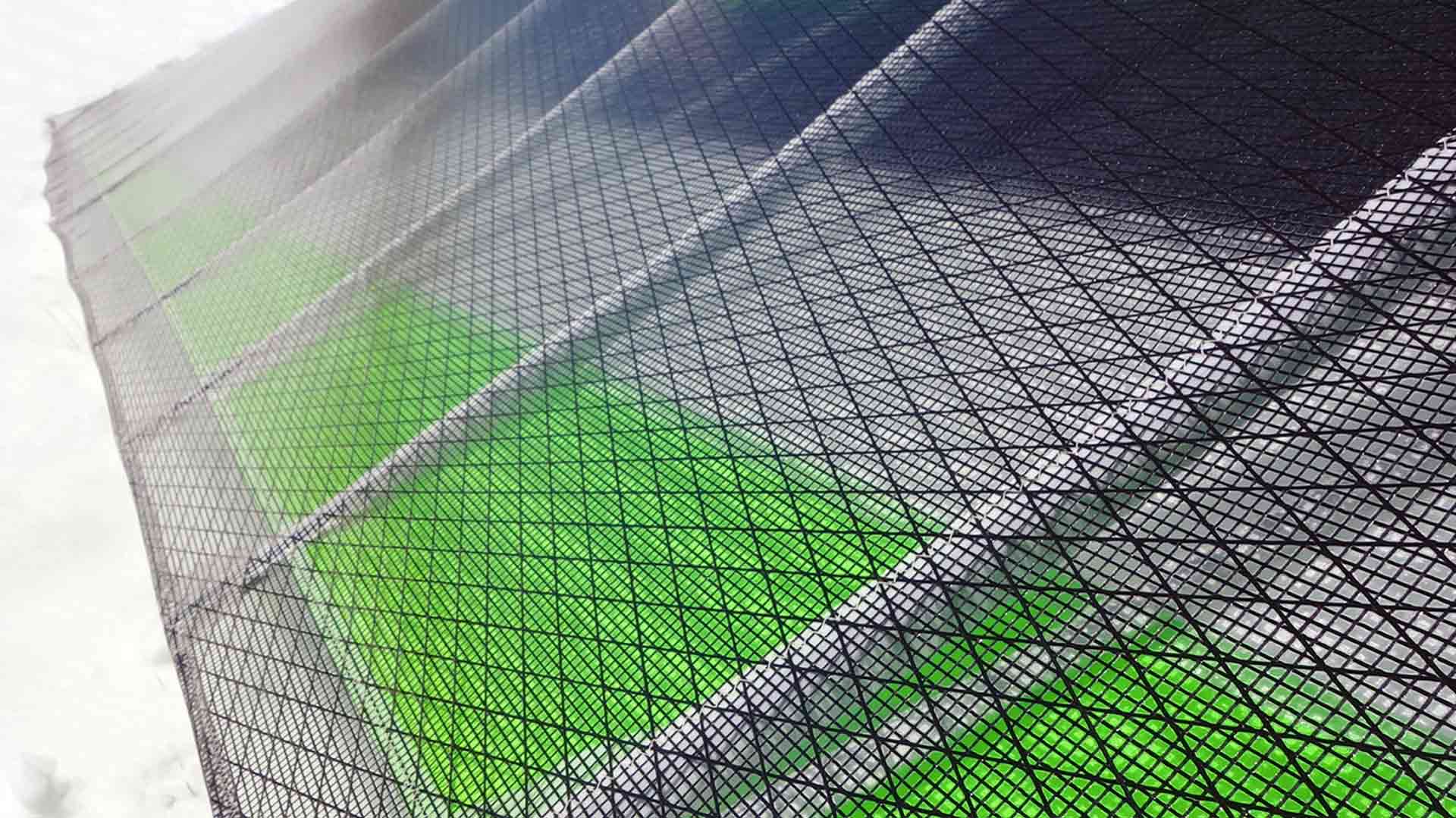
Icaro 2000 is committed to ongoing research in the quest for optimal quality and performance, and so the LSP sail has now been replaced by a new sail in Technora.
The Technora sail for the double surface, it offers even a more fascinating design, with the extra benefit of the weight reduction offered from this fabric.
The full Technora sail is approximately up to 700 grams lighter than the standard sail and it has much higher elongation characteristics. It gives the Laminar even better handling, along with unparalleled performance during glides.
Experience in aerobatic competition flying has led to new centre-section reinforcement, specially designed for use with Technora sails. This has made the glider more responsive, and improves the wing's efficiency in manoeuvres such as pulling out sharply from a high-speed dive.
The reinforcement added for the wingtips is also new, designed to increase the durability of laminate sails while also giving competition hang gliders a new and more aggressive design.
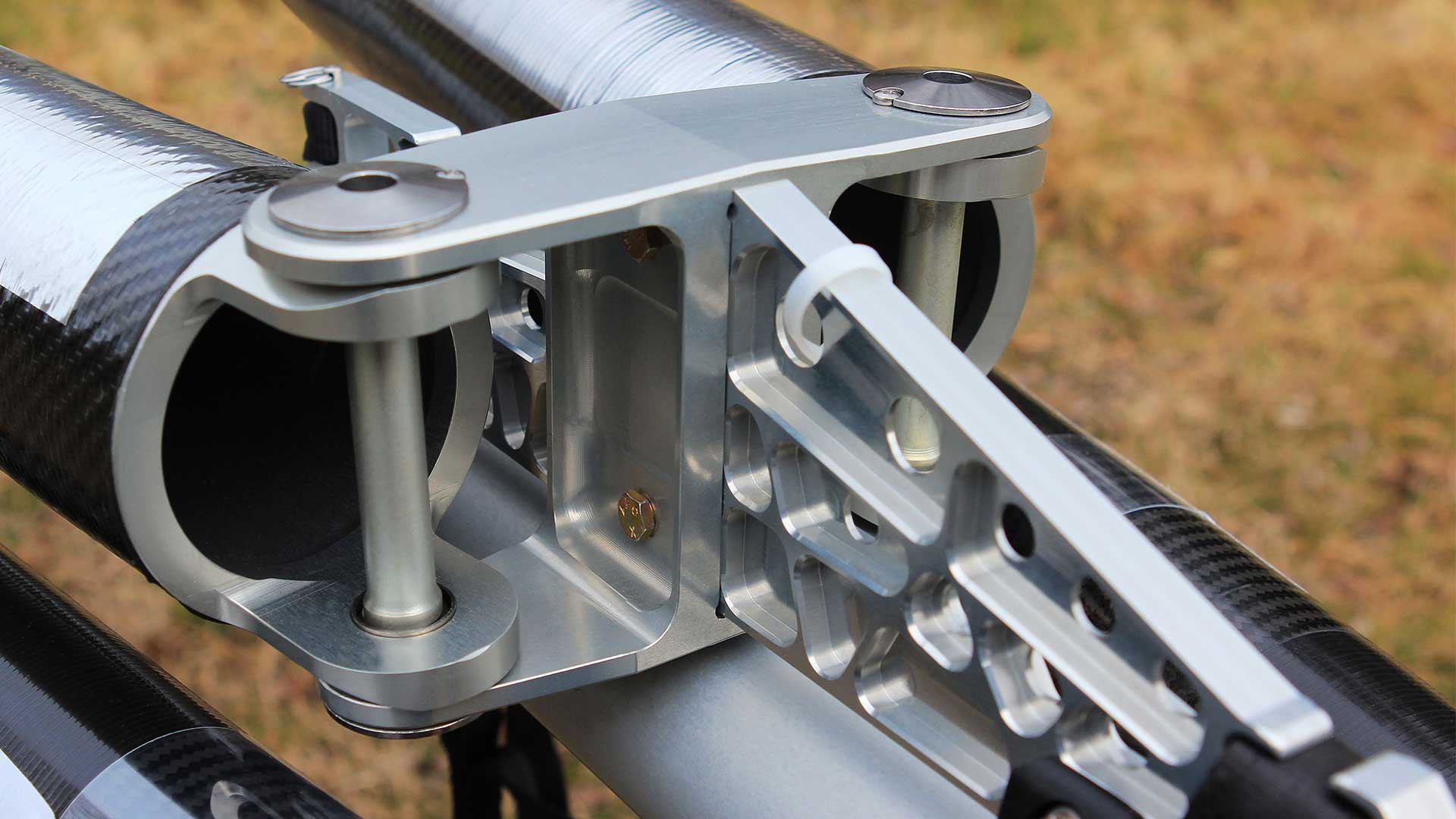
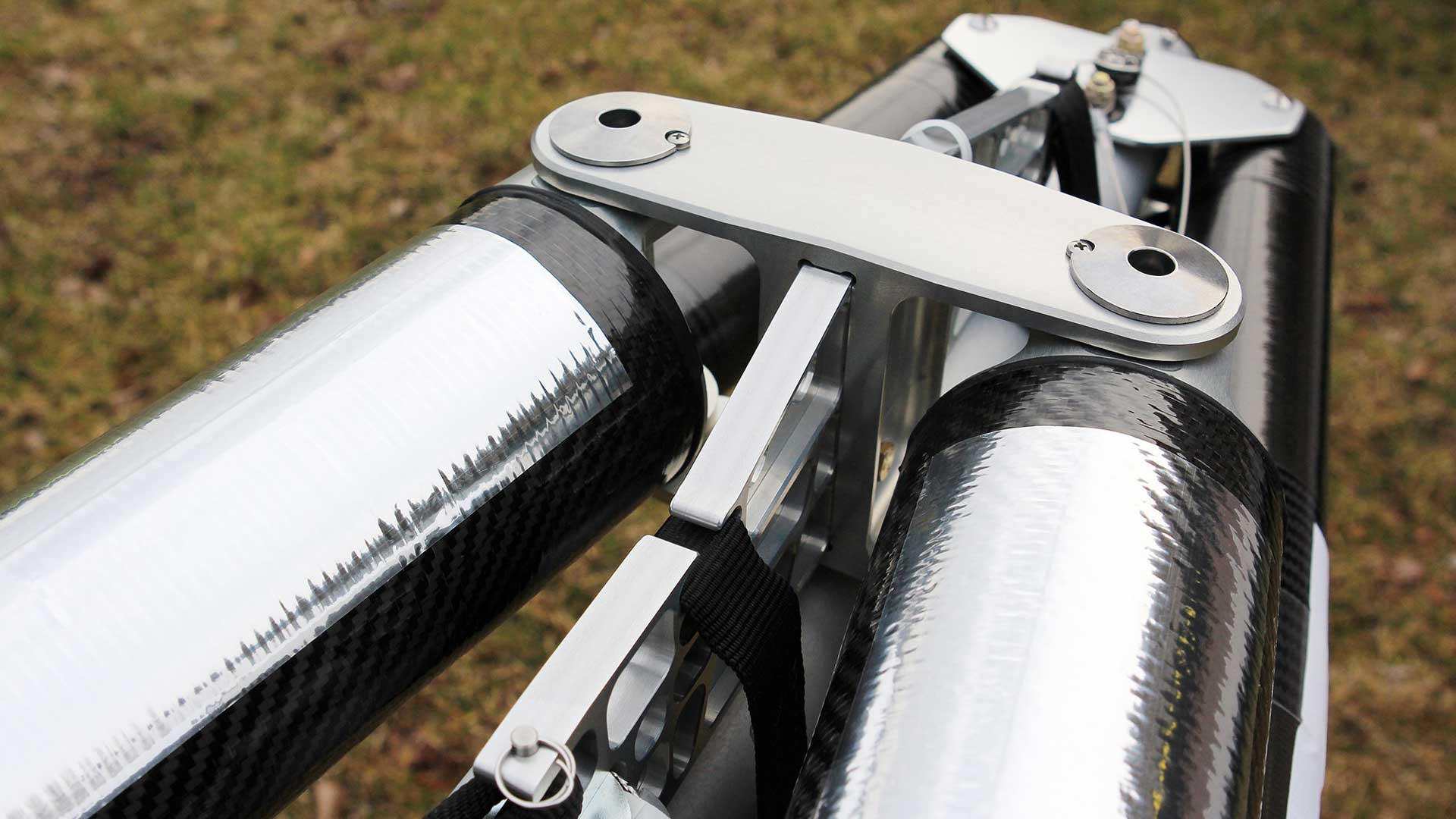
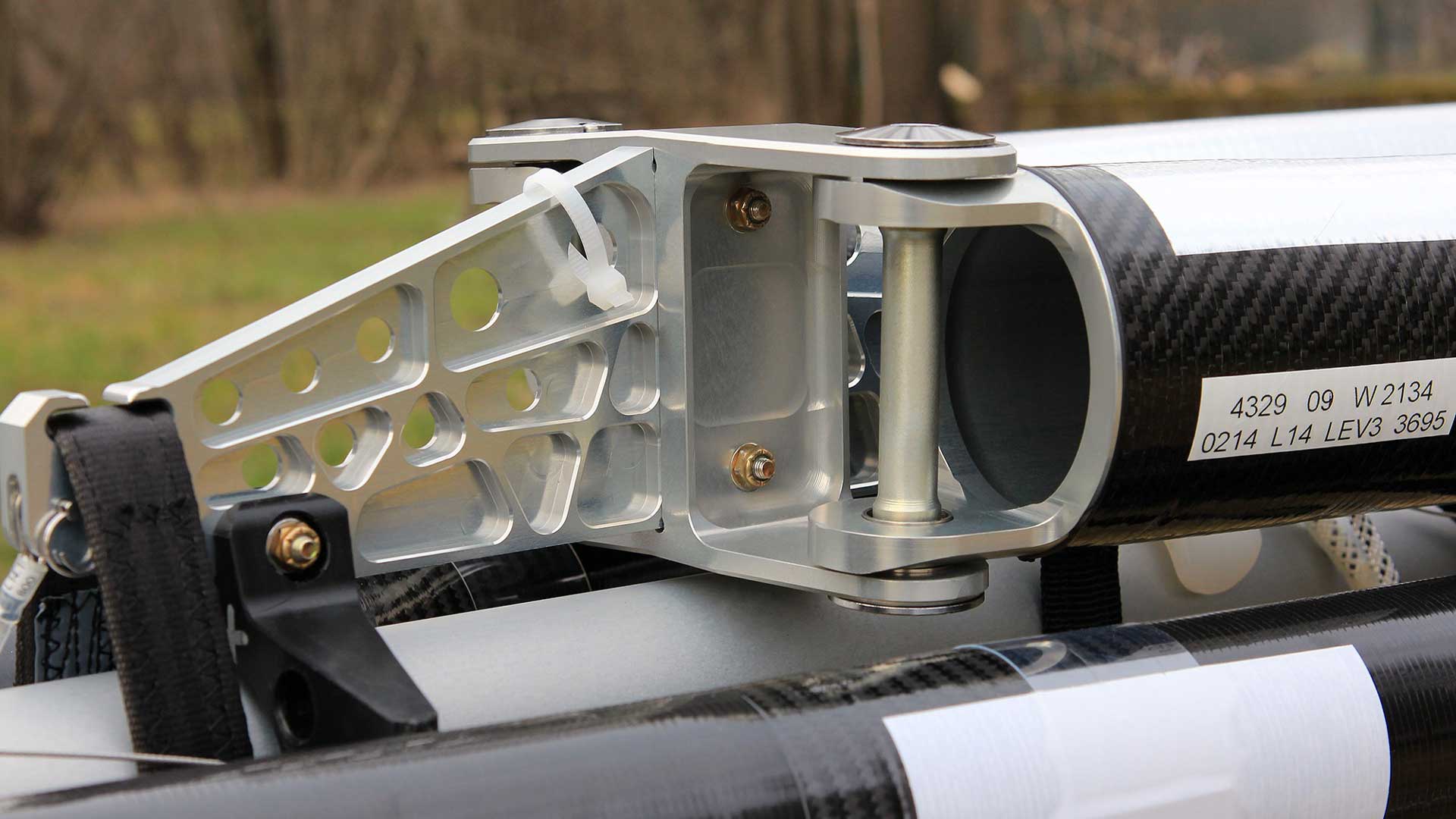
The tubes used for Icaro 2000 hang gliders are made in Ergal 7075, the alloy utilized in the aerospace industry.
They are manufactured by drawing, which guarantees the best possible performance in terms of
weight, rigidity and reliability.
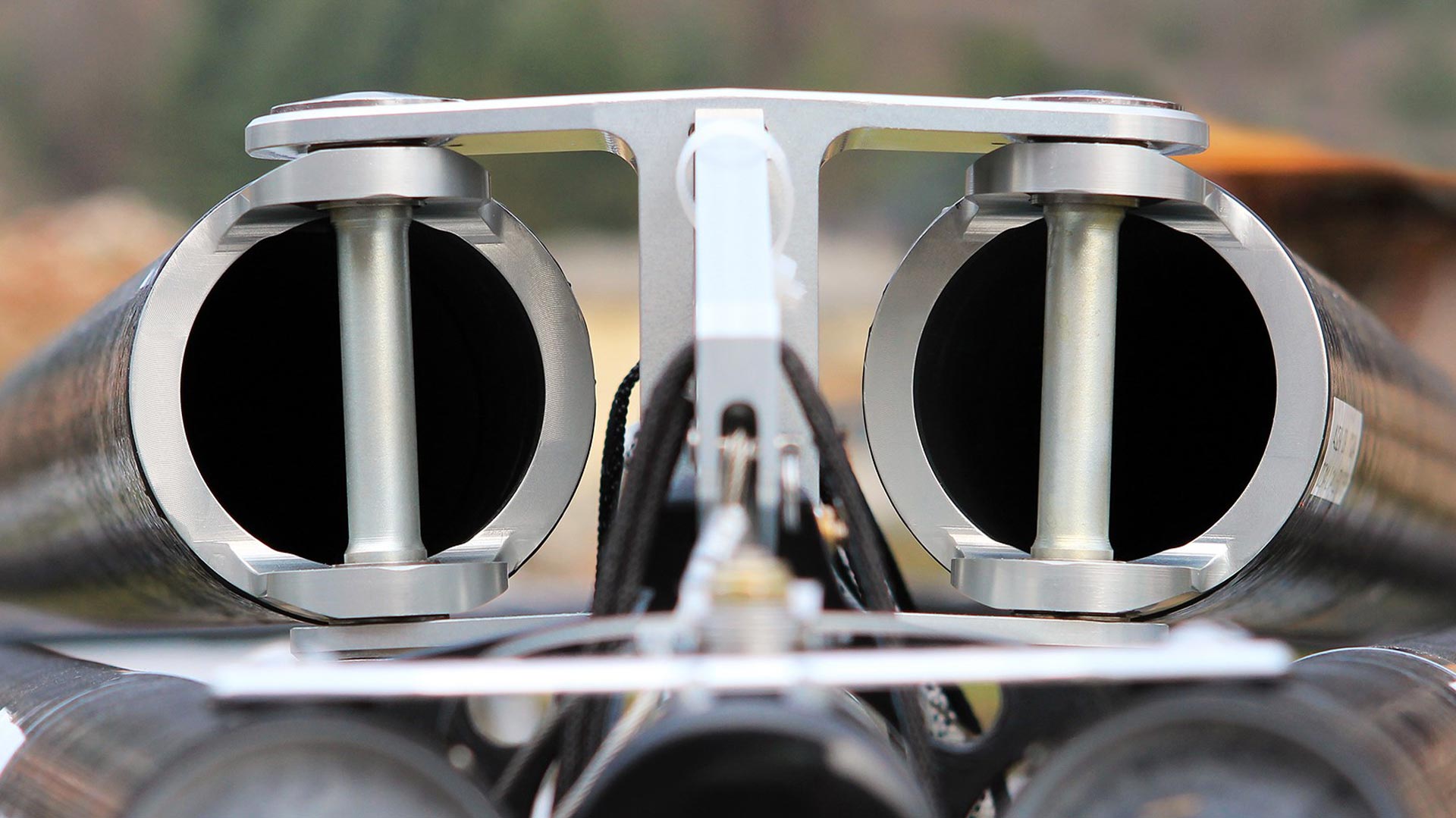
The new crossbar design with increased diameter and circular section, and the new lamination
of the carbon used in this component, have enabled a considerable weight reduction, while also increasing the maximum take-off load.
A new and more robust central H-block has helped achieve these results.
The new joints between crossbar and wing spar have also contributed to weight reduction, improving transfer of load to the crossbar and increasing torsional rigidity.
By means of these innovations, the total savings in weight when compared to the previous light version of the cross-bar is 700 grams in the 14.1 size and 1,200 grams for
the 12.6 size. At the same time, the maximum take-off weight permitted has increased by 10 kg in the larger size of the hang glider.
Icaro2000 is the only hang glider manufacturer in the world to manufacture, for all its topless models, a central crossbar junction block in Ergal 7075, made by the digitally-controlled machining of a solid block.
This process yields a strong, light component, in which stress is uniformly distributed
throughout the structure of the unit.
The cost of this technological process, when compared to the customary system used by our competitors (two aluminium plates screwed to the central slider) is much more expensive.
However, it ensures a higher degree of strength and reliability.
The new H-block has been redesigned in order to accommodate the circular-section cross-bar of increased dimensions. The greater strength that this provides has made it possible to attain the increases in maximum take-off weight as described above
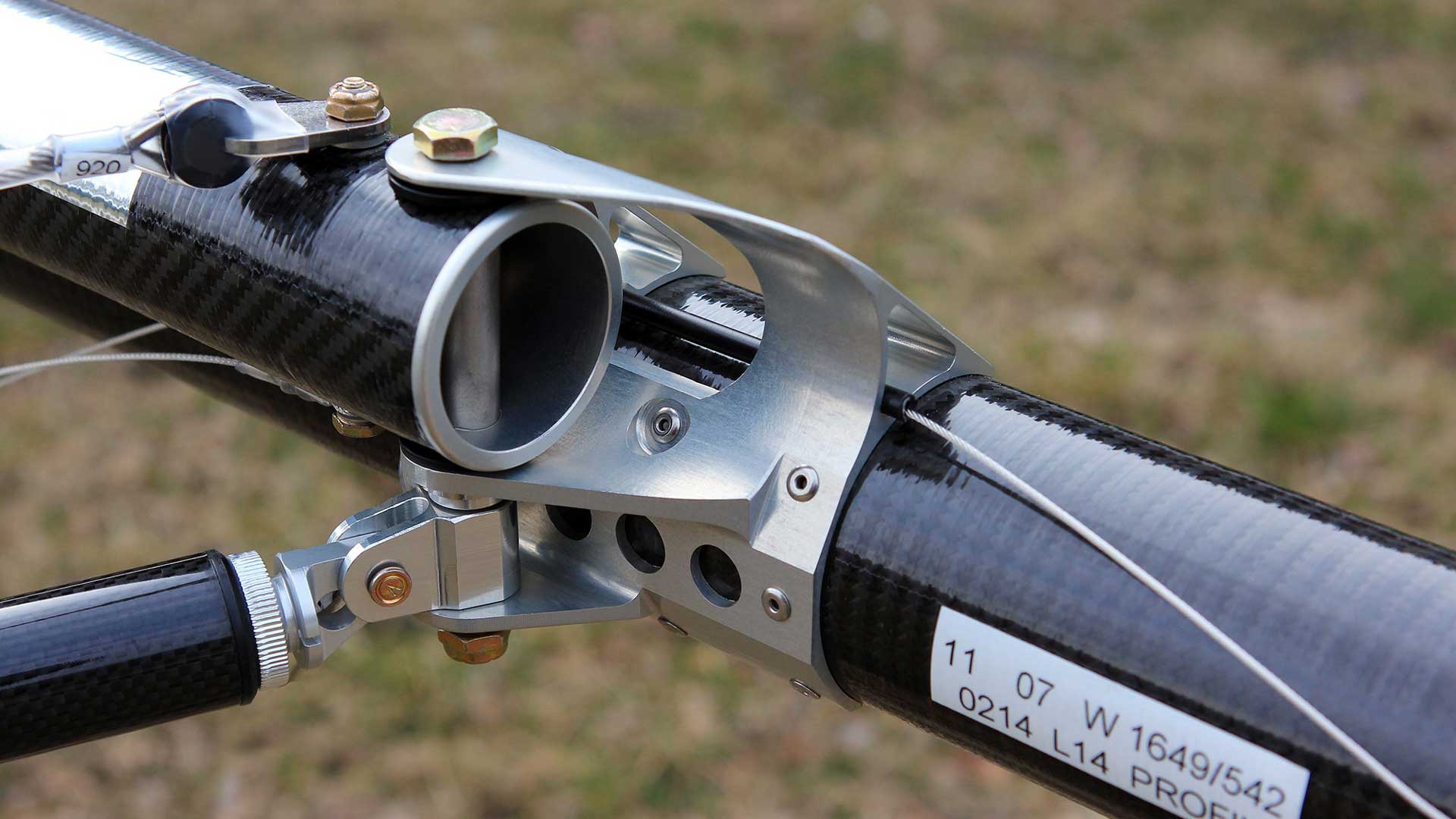
The new crossbar-wing spar joints have helped reduce overall weight and, most significantly, they have improved stress distribution throughout the crossbar, also increasing the torsional rigidity of the crossbar-wing spar joint.
This has made it possible to attain the desired level of stability for the hang glider, with sprog values that are lower when compared to the Z9.
As for the central crossbar junction, this important component in Ergal 7075 is made by the
digitally-controlled machining of a solid block.
The resulting unit is tough and compact, helping to give the glider an optimum wing profile at all VG configurations.
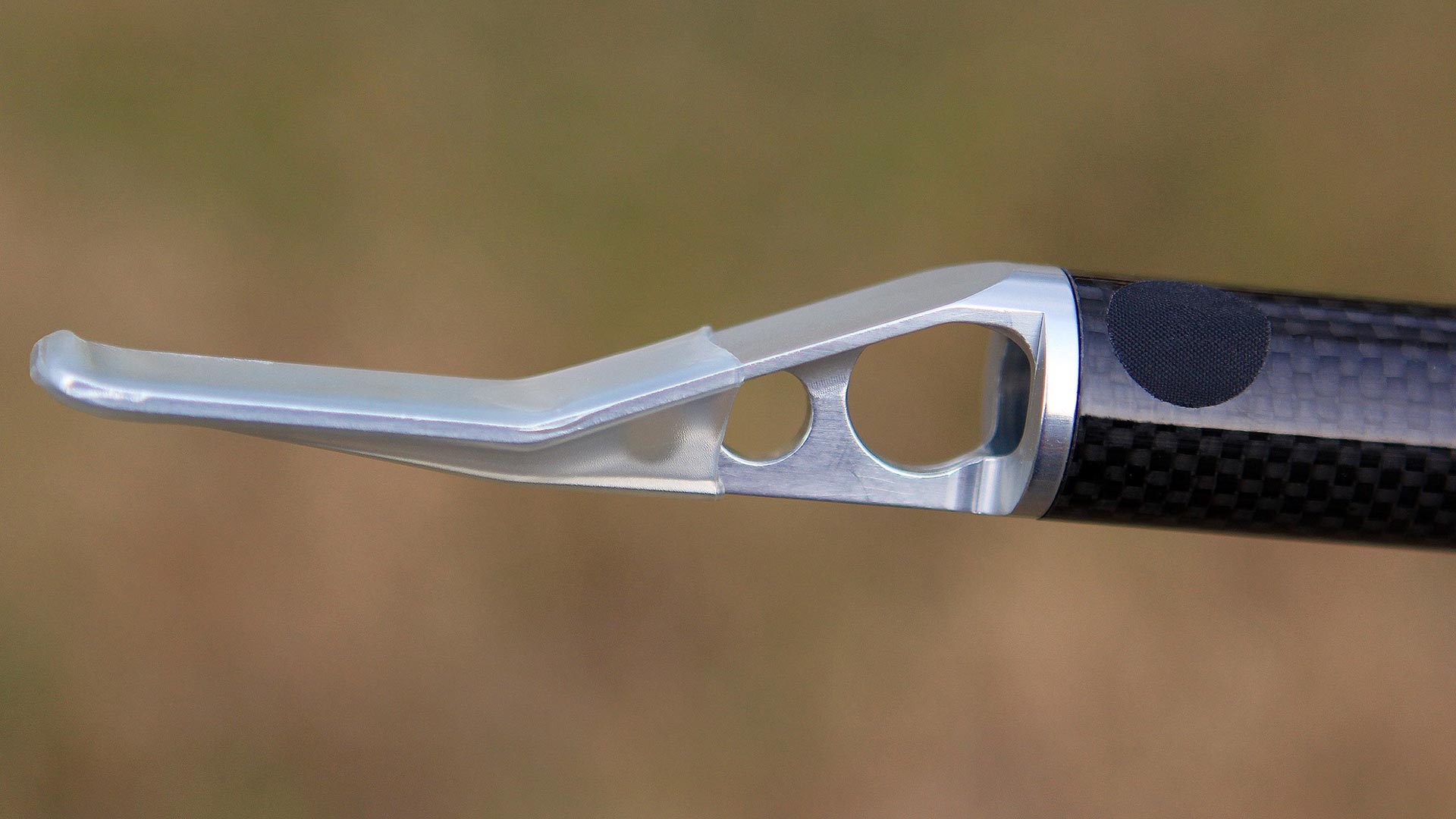
The carbon sprog of the centre section of each half-wing has been slightly compensated in order to provide variable washout at different VG configurations.
It is larger in the Laminar, providing greater strength and making the wing surface cleaner, by means of a part machined from a piece of solid Ergal at the tip of the sprog.
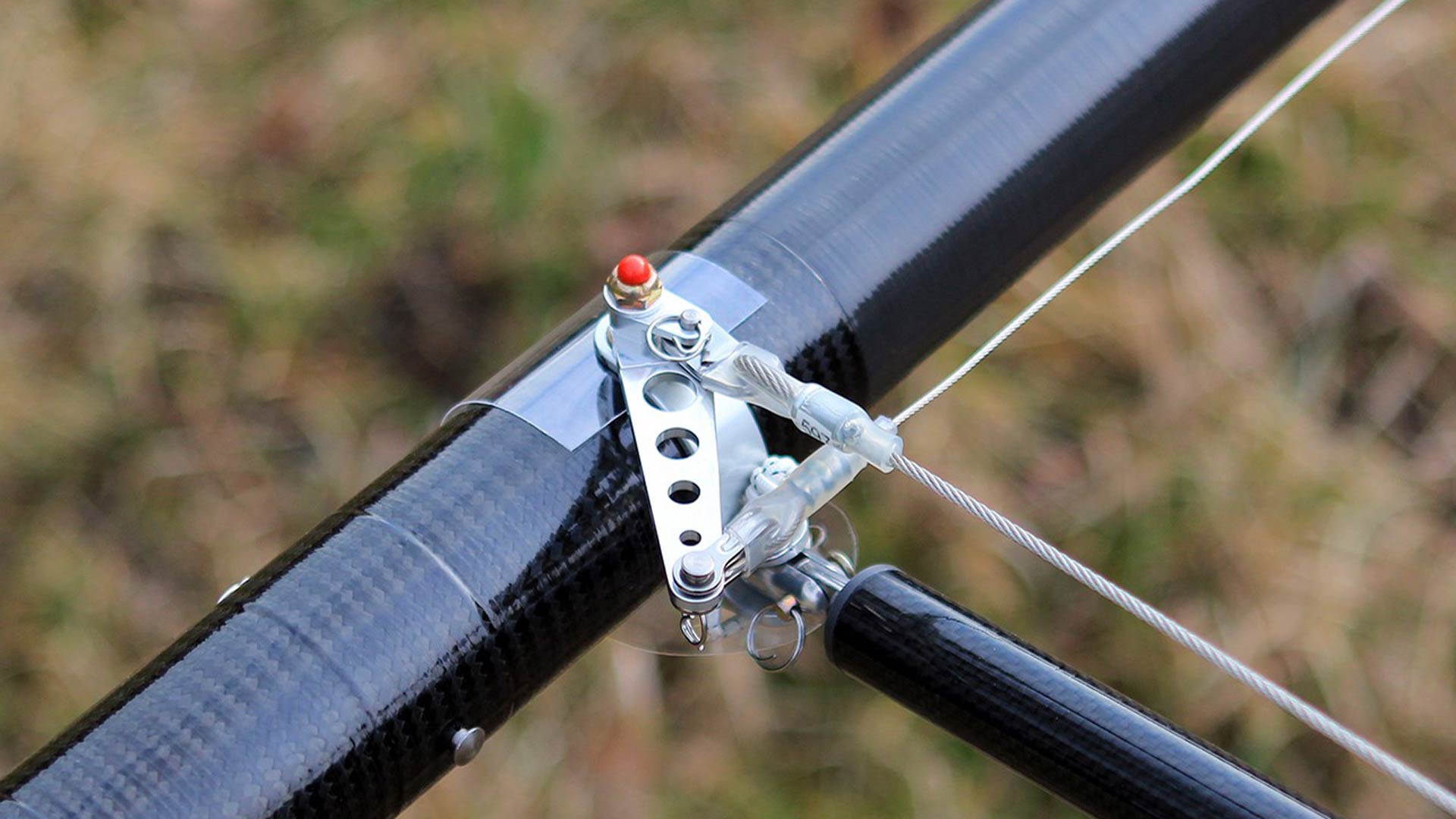
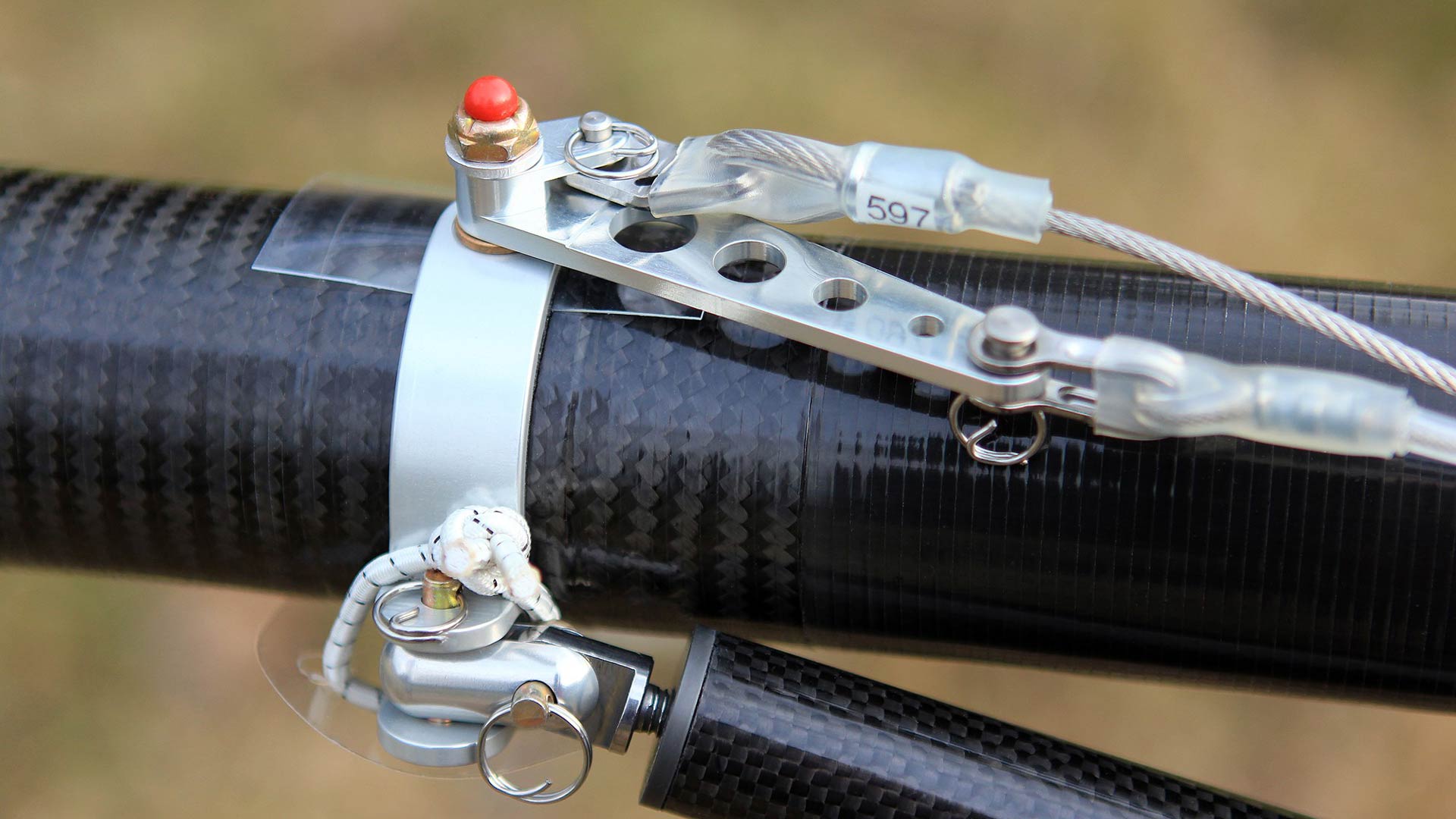
The new carbon fibre tips are thicker and have a part in Ergal at their extremity, like the sprogs.
They are made using the exclusive Icaro 2000 “Compensated Twist Tips” system, which ensures that the outer tips (which provide support for the two outermost battens) can move in mutually opposite directions, even when the sail is in direct contact with them.
This situation occurs in Variable Geometry configurations from ½ to full on.
At these VG settings, wings of the previous generation did not permit any sail movement, and this caused a reduction in handling qualities.
The system is completed by an efficient compensation system, another Icaro 2000 exclusive feature, linked to VG movement, ensuring the best possible performance and stability for the hang glider.
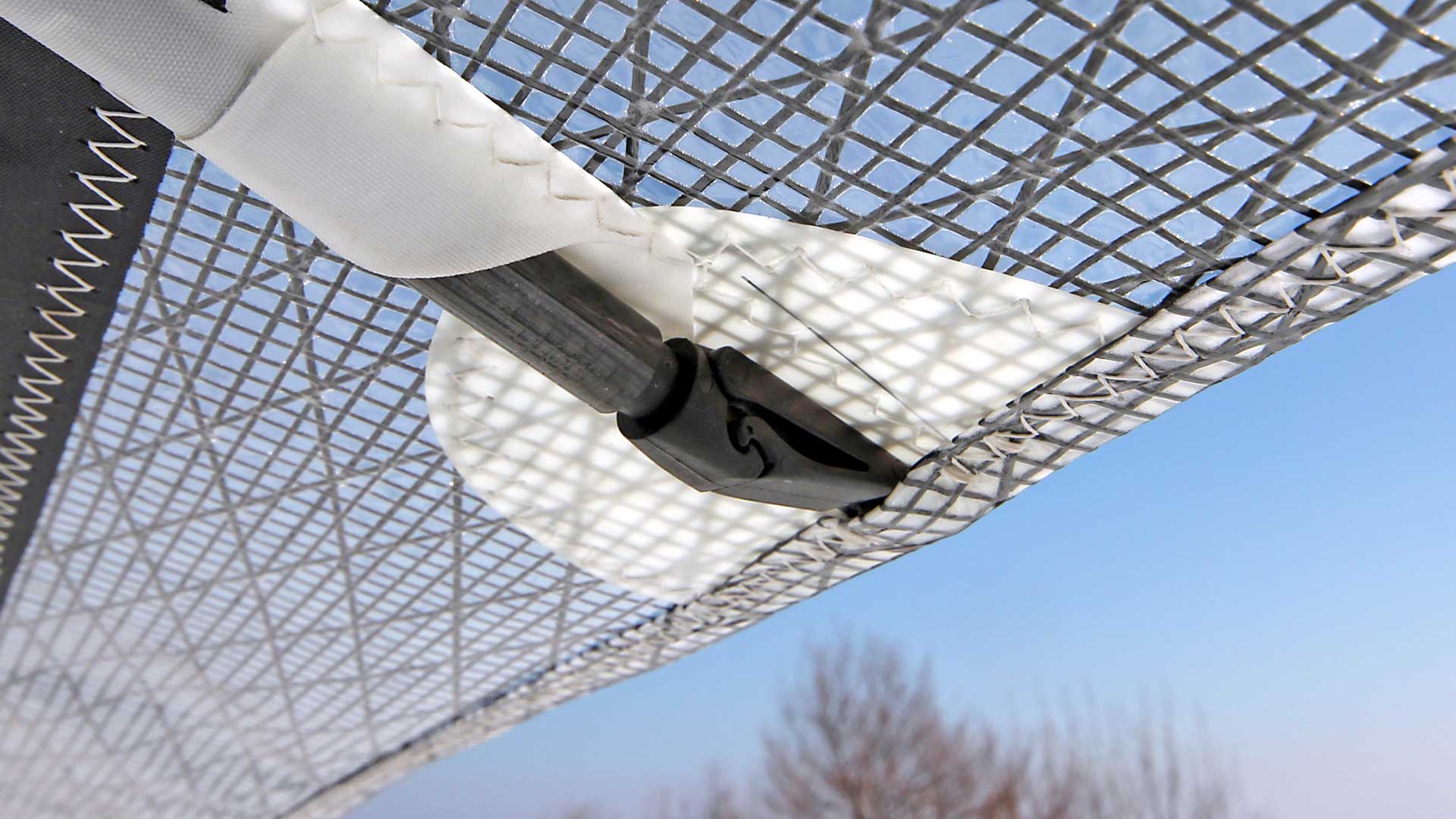
The “snap lock” system is efficient and practical, and it also permits the precise regulation of sail tension.
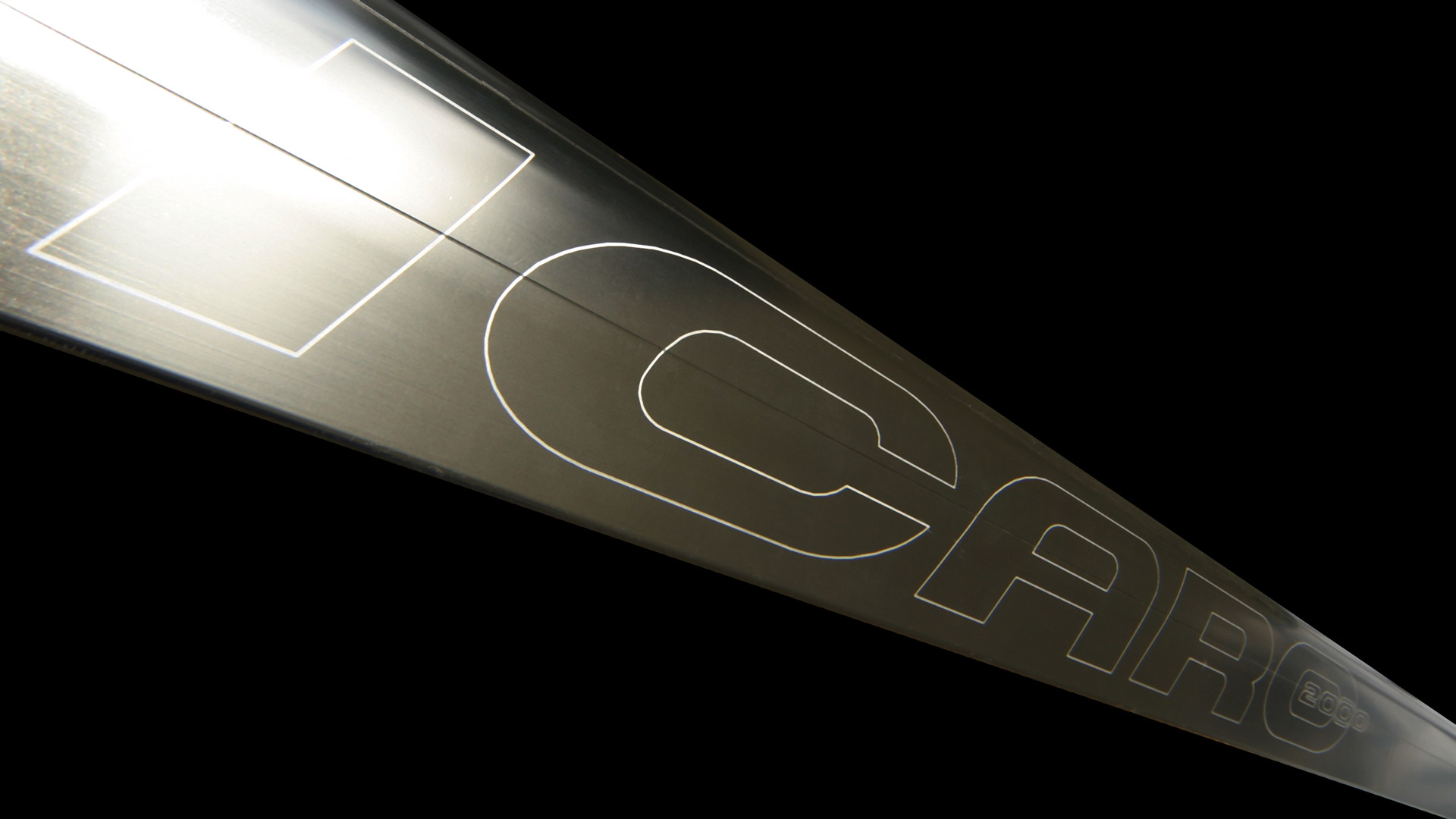
The aluminium competition downtubes have a profile that includes a turbulator, which guarantees a low aerodynamic drag coefficient, and ensures the best possible performance/price ratio.
As they are slightly longer than standard downtubes, they also give the glider better handling and eliminate any bias during turns.
This A-frame is available with the MR carbon fibre speedbar.
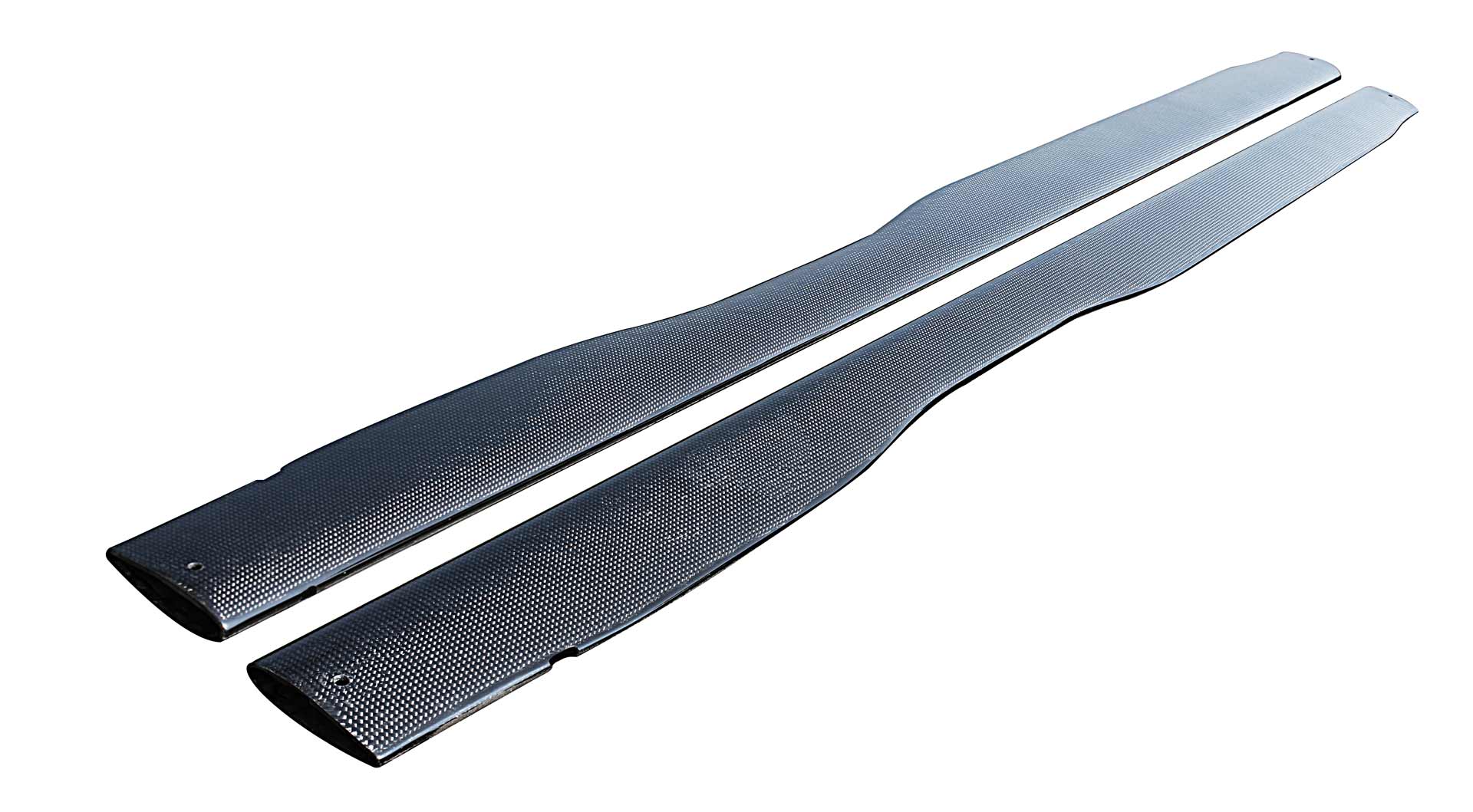
The aluminium competition downtubes have a profile that includes a turbulator, which guarantees a low aerodynamic drag coefficient, and ensures the best possible performance/price ratio.
As they are slightly longer than standard downtubes, they also give the glider better handling and eliminate any bias during turns.
This A-frame is available with the MR carbon fibre speedbar.
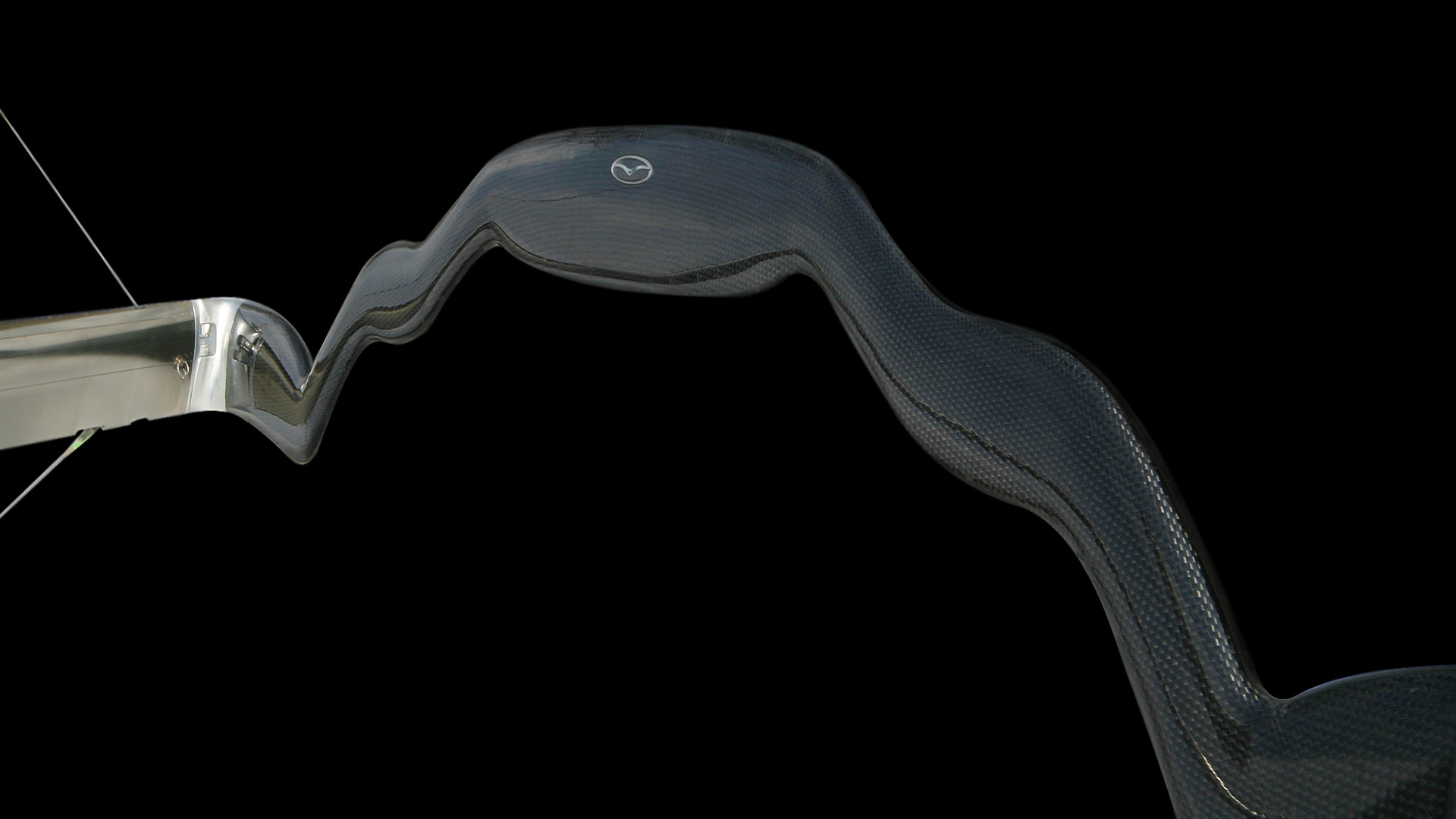
Aerodynamics, Ergonomics, Lightness. In your hands.
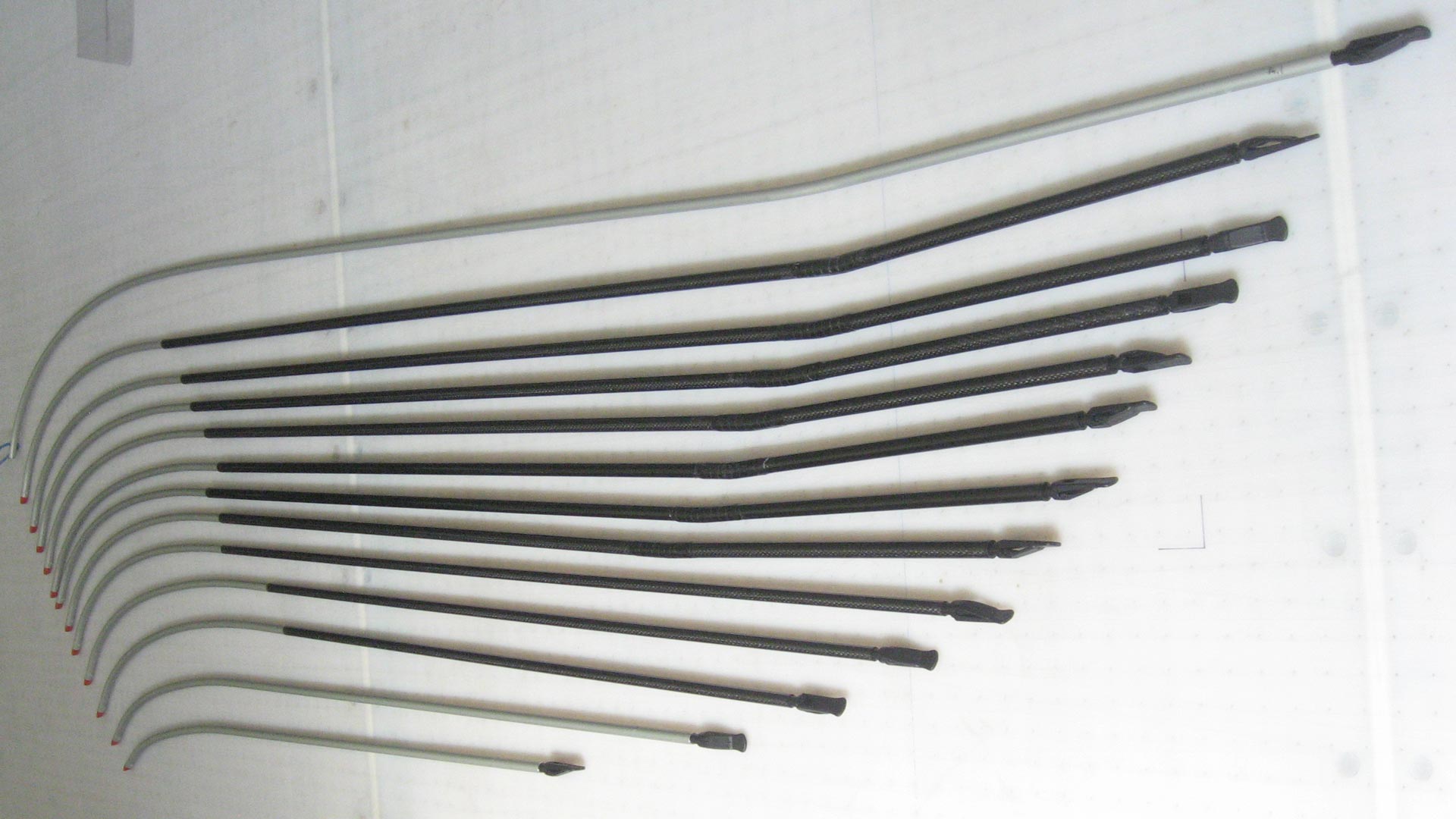
Carbon battens have a far higher rigidity when compared to aluminium battens, and so they give the hang glider greater stability and improved performance.
The benefits of carbon fibre battens become immediately obvious from the greater stability that they provide.
The reflex aerofoil profile is in fact improved by the greater rigidity of this type of batten, and this has an important effect on wing stability. As a result, the degree of washout introduced by sprogs and tips can be reduced.
The efficacy of carbon battens is such that they should be the first optional feature to choose when the objective is to possess a hang glider of highest possible performance.
For example, when using aluminium battens, with VG fully tightened and sprogs and tips adjusted to the furthest possible degree, bar pressure is close to zero at about 90 km/h. Flying the same hang glider in the same configuration, except with the new carbon fibre battens, bar pressure will be positive at all speeds; more specifically, it will be light, but still positive, even at 120 km/h.
Our carbon battens are 12 and 10 mm in diameter.
The benefits that we have experienced using carbon battens are so exceptional that their adoption is more than justified, notwithstanding their high price.
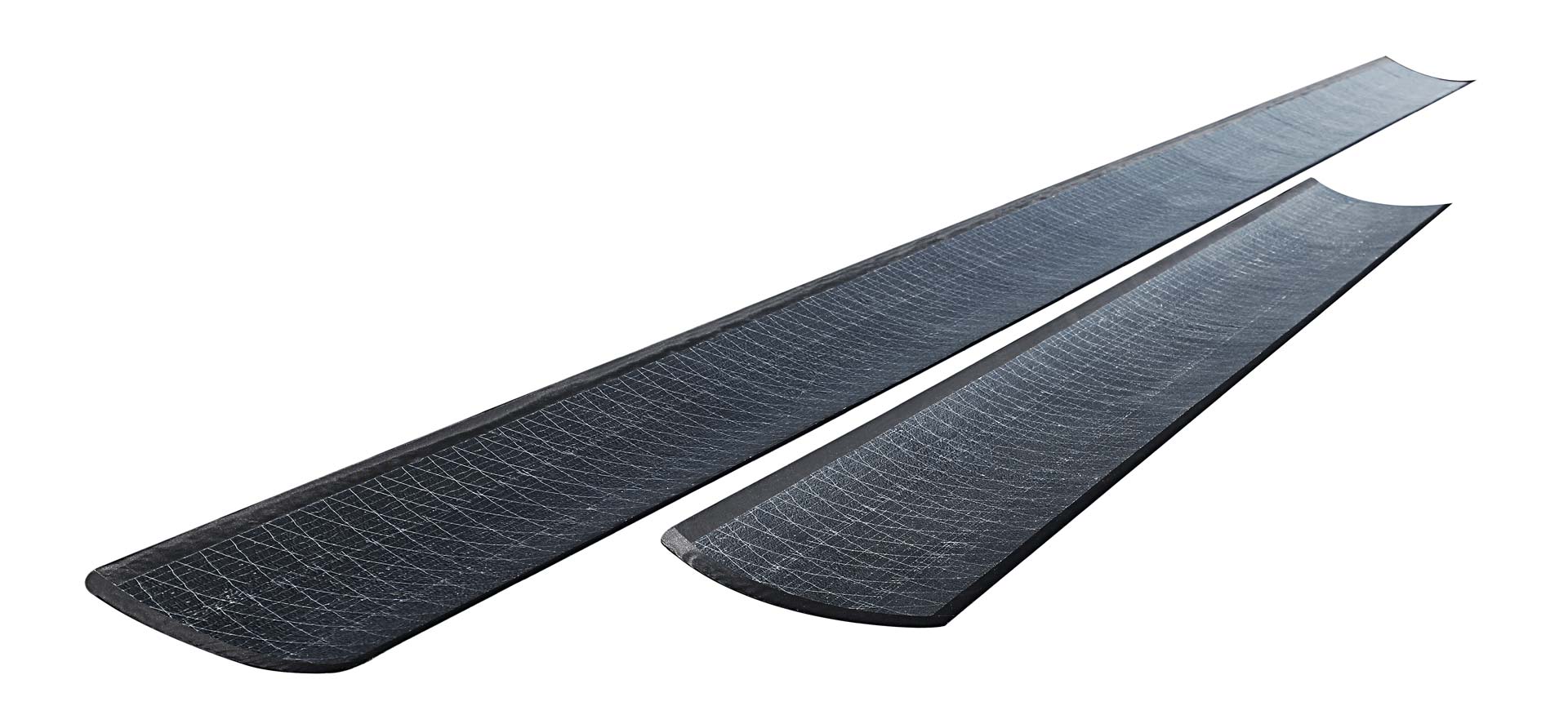
These carbon fibre components are inserted into a Mylar pocket in the central part of the leading edge, they are available in two length options of 1.25 and 2.5 m, both 20 cm wide.
This optional component prevents changes in aerofoil profile at high speeds, optimizing performance at speeds over 80 km/h.
We recommend the 2.5 m version only for those who don’t want to miss out on the slight benefit during glides, even though it represents a sacrifice of about 300 grams weight.
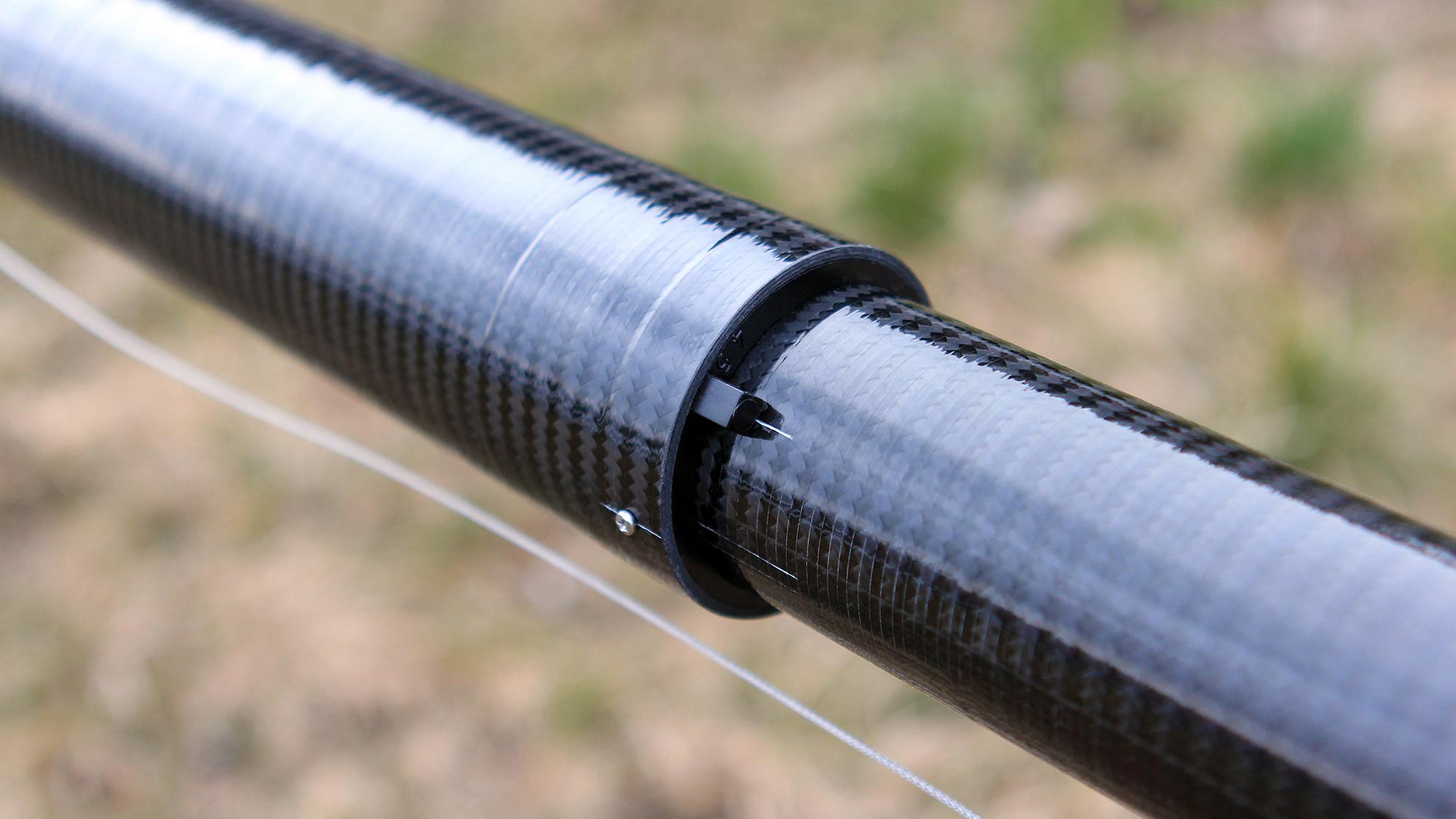
Designed to optimize handling and performance, carbon leading edges provide a weight reduction of up to 1.25 kg and a 10% increase in rigidity.
In the arrangement with the front part of the leading edge in aluminium and the extremity in carbon, the weight reduction is about 550 grams, in the area where the weight factor is most important.
They have a minimum thickness that is 30% greater with respect to aluminum version, and they are also stronger, ensuring high reliability and durability.
The perfect combination of performance and handling.
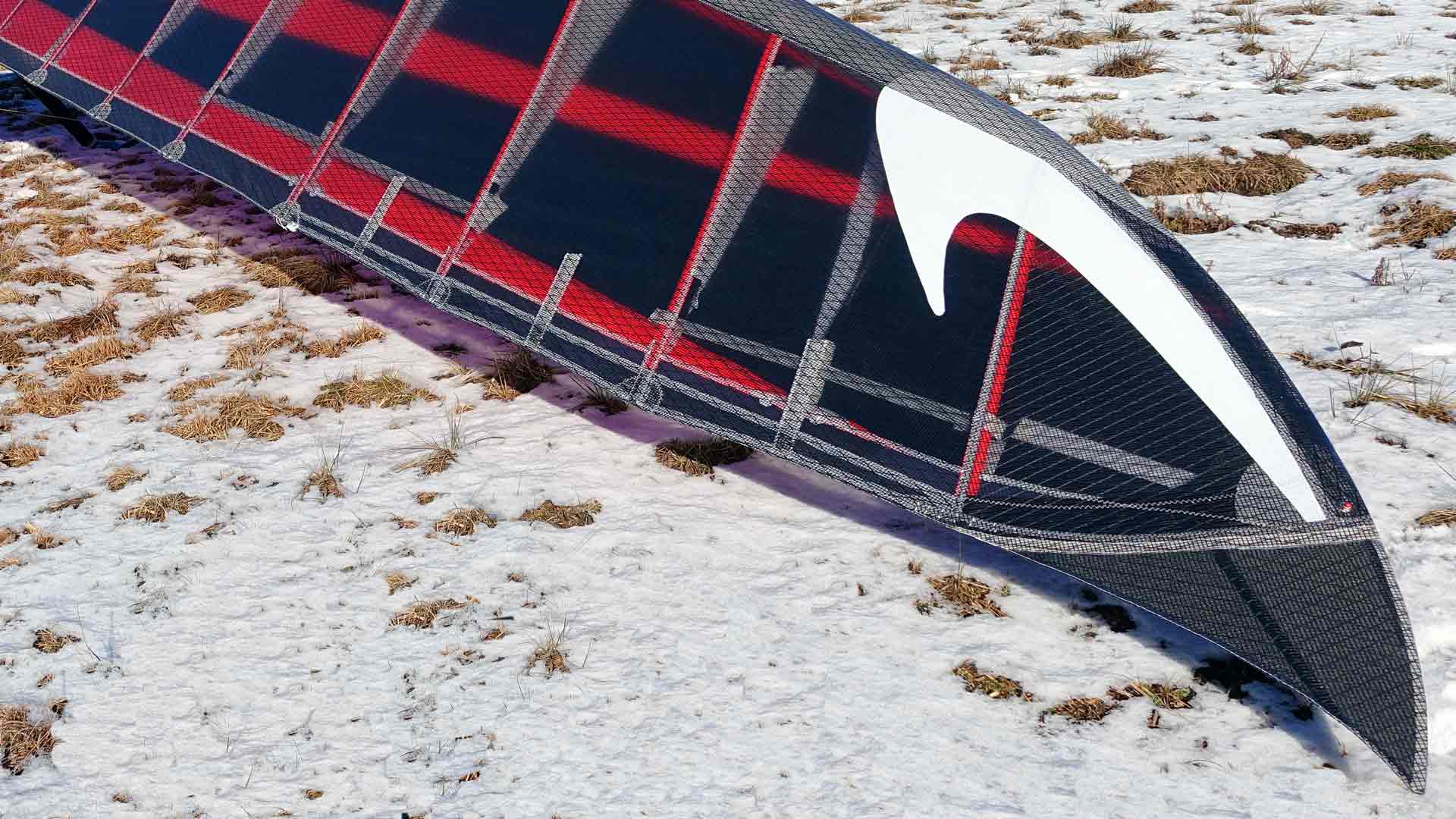
Developed in order to reduce wingtip vortices, the new wingtips increase aspect ratio and therefore increase performance in the mid-low speed range.
As a result, they improve efficiency at the most frequently-used gliding speeds, and increase performance in thermals.
At the same time, they give a new and attractive look to the hang glider.
The Profiler is a foam applied to the front of the leading edge spar tube, reducing its radius of curvature and giving it a higher penetration.
It also has the secondary effect of increasing sail tension and reducing washout when VG is full
on, and so it increases performance at high speeds.
Icaro 2000 recommends compliance with the timescale of programmed maintenance as detailed in the user manual. In addition, the manufacturer would like to remind you that an additional check may be necessary every time that an unusual event (heavy landing, unsuitable transport conditions, etc.) gives rise to doubts regarding the hang glider’s airworthiness. Programmed maintenance and checks must be performed only by qualified staff, using exclusively original Icaro 2000 spare parts.
In this regard, Icaro 2000 can perform the maintenance operations on a hang glider in the space of one day, by appointment.
Icaro 2000 also reminds you that hang glider sails also require periodical substitution. Over the years, repeated folding and exposure to sunlight causes a gradual deterioration in physical strength and shape, affecting the parameters of maximum admissible loading, the wing’s aerodynamic behaviour and therefore the hang glider’s stability. This process of ageing affects all types of sail, though to different degrees.